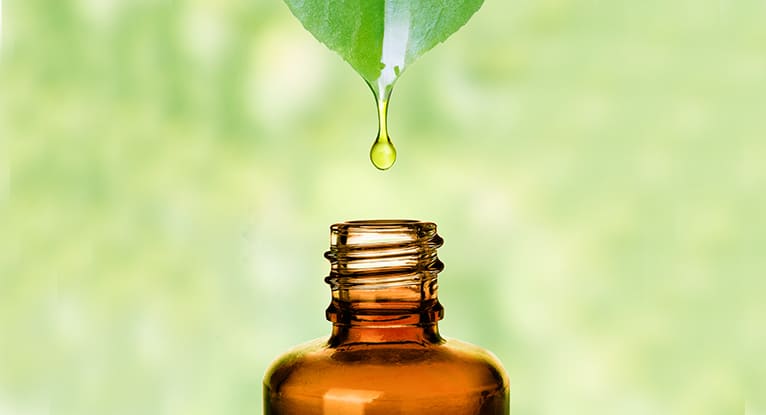
Danodan products are about as simple as they come. Aside from the beautiful Oregon-grown hemp, our other ingredient is one you likely won’t see in other hemp CBD products: glycerin. So we would like to take this opportunity to share some information, including why we LOVE using glycerin for CBD extracts!
Where does Danodan’s glycerin come from?
In the interest of transparency, it is very important for us to discuss the sourcing of our glycerin.
To begin, we use 100% organic vegetable glycerin. This means that it is certified organic and vegan (some glycerin can be derived from animal products).
Vegetable glycerin is produced from either soy, palm, or coconut oil, which usually occurs as a by-product during the production of soap or biodiesel. While it can be difficult to trace which source our glycerin comes from, rest assured that it is always certified organic.
Where is glycerin commonly used?
Vegetable glycerin is a very common and perfectly safe substance that is used in hundreds if not thousands of everyday products, from cosmetics to energy bars.
Glycerin is Generally Recognized As Safe (GRAS) by the US Food and Drug Administration (FDA), meaning that it is safe for use by adults and children. Extensive research into the safety of glycerin has shown that it carries no risk of side-effects or adverse health outcomes.
Glycerin is technically a sugar alcohol (although it does not contain any alcohol). It contains 4.3 Calories per gram, and is classified as a carbohydrate. Glycerin is 75% as sweet as sucrose and 40% as sweet as table sugar. It has a glycemic index of 4, which is very low, meaning it is completely safe for diabetics to use. Glycemic index is the measurement of a food’s impact on blood glucose levels. It is also considered completely harmless to one’s teeth.
Beyond being a common ingredient, glycerin is also approved as a drug. It can be administered as a suppository, for use to relieve occasional constipation, or as a gel, for relief of minor mouth or throat irritation.
Why does Danodan use glycerin?
Here at Danodan, we choose to use glycerin for a variety of reasons.
#1: Glycerin is a very gentle solvent
When we were deciding what solvent to use, we wanted to make sure it was something that could extract all that hemp had to offer without hurting the plant. Beyond CBD, our therapeutic hemp is rich in other phytocannabinoids, terpenes, flavonoids, and chlorophyll. All of these compounds have beneficial properties of their own, and this is why we wanted to make sure that as much of that goodness ends up in our Hemp Flower Shots as possible. Glycerin achieves this goal, and that is why we love it!
Our process differs greatly from many other CBD products. Products that use processes like CO2 extraction, nano-emulsification, or harsh solvents severely damage the plant in the process, destroying all of the secondary compounds in a process that can only be likened to strip mining.
In our opinion, this process does not respect the whole plant, and only uses it for CBD, ignoring hemp’s true potential.
#2: Glycerin is readily and easily absorbed into our bodies
Absorption occurs in the small intestine, where the majority of nutrients – including fat, protein, carbohydrates, vitamins, minerals, and water – are all absorbed. Because glycerin is a common product, there is very little risk of adverse side-effects.
That being said, because of glycerin’s known use as a laxative, it is possible (although uncommon) to experience laxative effects when using Danodan. Such side effects are very rare.
#3: Glycerin is completely water-soluble
Although glycerin is derived from oil and is a component of triglycerides (a type of fat), glycerin itself is considered a form of carbohydrate, and is completely water-soluble.
This means that Danodan products can easily mix into any water-based liquid, from tea to beer, smoothies to coconut water. We think this makes Danodan flexible and fun, able to go anywhere and do most anything.
Other CBD products are also water-soluble, but this is often for very different reasons. These products are usually nano-emulsifications, which means that the CBD is broken down into smaller-than-microscopic particles and suspended in water. In most cases, the CBD isn’t actually emulsified into the water, it’s just so small that it doesn’t separate and is suspended between the water molecules.
This level of processing is very intensive, and leaves the CBD completely isolated. Danodan products are the complete opposite: our CBD is accompanied by all of the other beneficial components of the plant, meaning it is naturally full-spectrum and is a true representation of the entire hemp flower.
Glycerin makes Danodan unique and effective
By using organic vegetable glycerin in our products, we create a unique, flexible, gentle, and effective formula. Our production methods respect the entirety of Oregon-grown therapeutic hemp, instead of abusing it for CBD only.
Thanks to our organic vegetable glycerin, Danodan Hemp Flower Shots have a place in the pantry as well as the medicine cabinet. We strongly encourage you to experiment with your Danodan. Mix it into a beverage, add it to salad dressings, swirl it into soup, or drizzle it over ice cream. That is why we love using glycerin for CBD extracts!
Share your comments, recipe ideas, and favorite Danodan stories with us anytime. Email our Education Specialist, Andrew Harmon, at andrew@danodan.com. Be well!
References:
-
Glycerin (Glycerol). Nutrients Review online. Available at: http://www.nutrientsreview.com/carbs/edible-glycerin.html. Accessed 4 Feb 2020.
-
Glycerol. Sugar-And-Sweetener-Guide. Available at: http://www.sugar-and-sweetener-guide.com/glycerol.html. Accessed 4 Feb 2020.
-
Glycerin: Drug Information. UpToDate. Available at: http://www.uptodate.com/contents/glycerin-drug-information/. Accessed 4 Feb 2020.

